The Hearst Tower - A Paradigm Of Innovative And Sustainable Architecture By Norman Foster
- 27 Dec 2023
- By Paras Gandhi

Sir Norman Foster is a renowned British architect whose innovative designs have left an indelible mark on the world of architecture. With a career spanning several decades, he is celebrated for his iconic structures that blend cutting-edge technology with sustainability. Foster's creations, characterized by sleek lines and innovative use of materials, have made him a leading figure in contemporary architecture.
Sir Norman Foster has an extensive portfolio of remarkable architectural works. While opinions on the "best" may vary, here are three of his most renowned and influential projects:
1. The Gherkin (30 St Mary Axe) - London, UK
This iconic skyscraper is one of the most recognizable landmarks in London. Its distinctive, energy-efficient design and curved glass facade have set new standards for modern office buildings.
2. Millennium Bridge - London, UK
Also known as the "Wobbly Bridge," this pedestrian suspension bridge spanning the river Thames is a feat of engineering and design. It provides stunning views of the city and connects St. Paul's Cathedral with the Tate Modern.
3. The Hearst Tower - New York City, USA
This innovative skyscraper combines a historic Art Deco facade with a modern glass tower. It's celebrated for its sustainable features and marked Foster's commitment to environmentally responsible architecture.
These three projects showcase Foster's architectural prowess, blending modernity with functionality and sustainability.
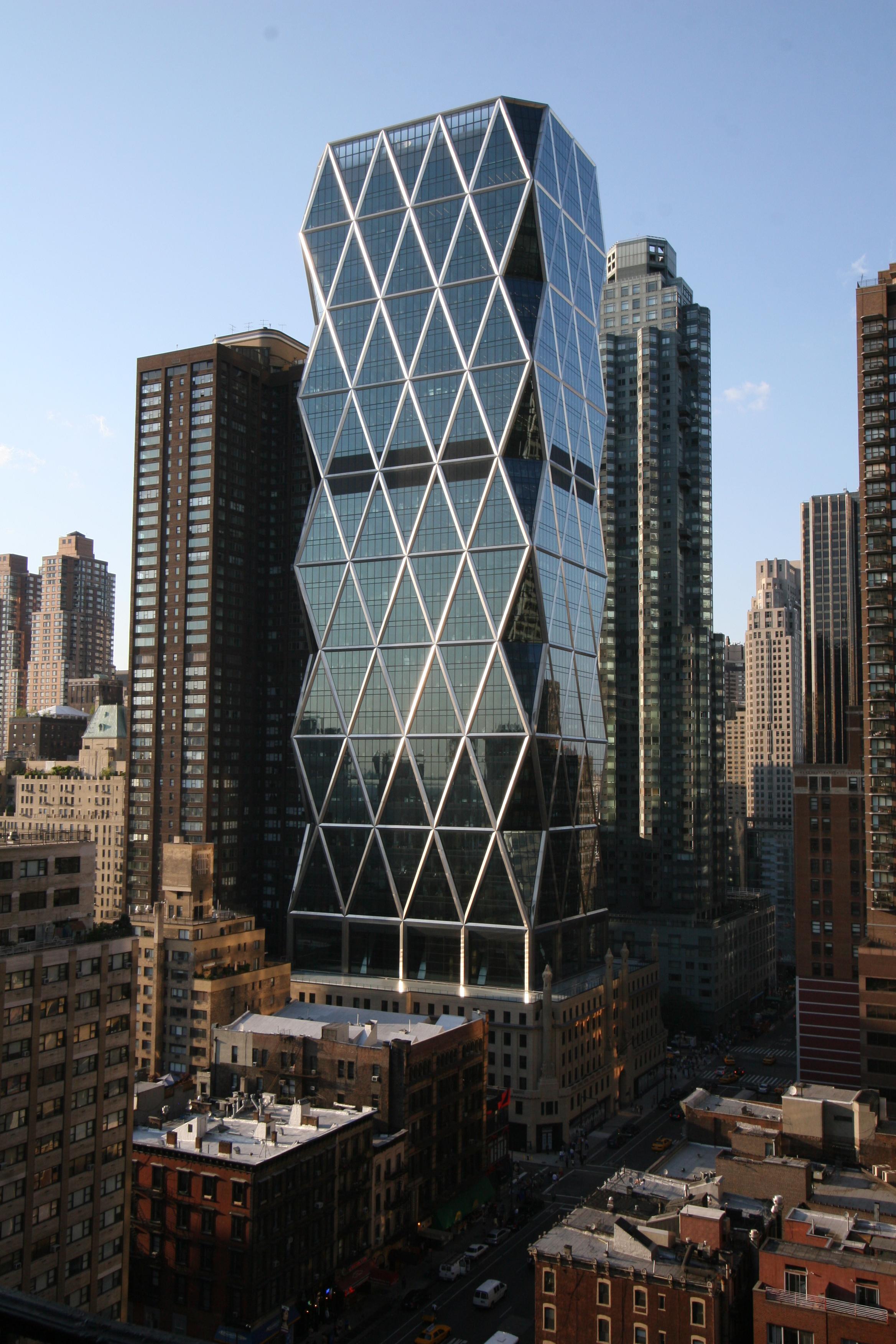
The Hearst Tower - A Paradigm of Innovative and Sustainable Architecture by Norman Foster
The Hearst Tower, located in the heart of Manhattan, New York City, stands as a prime exemplar of innovative and sustainable architecture. Designed by the eminent architect Norman Foster, this skyscraper is a harmonious blend of historic Art Deco aesthetics and modern, environmentally responsible design. With its striking visual appeal and cutting-edge sustainability features, the Hearst Tower is a testament to Foster's architectural prowess and commitment to environmental responsibility.
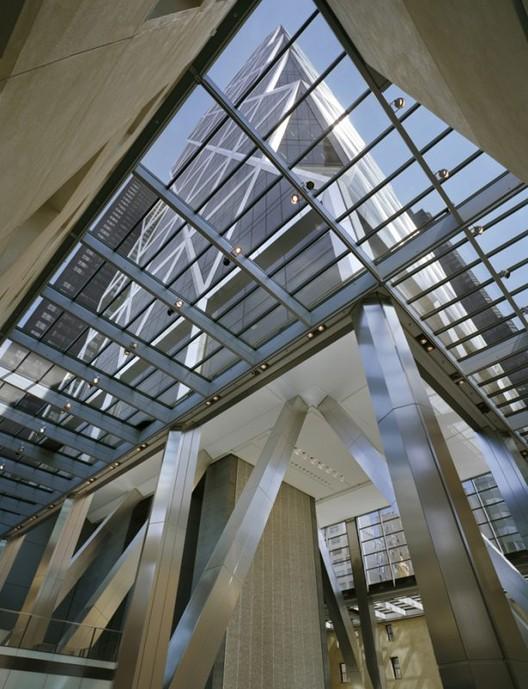
History and Architecture
The Hearst Tower's story is one of architectural evolution and innovation. The building's original six-story base, constructed in 1928 and designed by Joseph Urban, was an Art Deco masterpiece. Its bold, ornamented facade and exquisite detailing made it a quintessential representation of its era. However, it wasn't until nearly eight decades later that the tower above was conceived.
Norman Foster's architectural vision for the Hearst Tower was to preserve and integrate the existing historic structure with a modern tower that exemplified sustainability and contemporary design. This ambitious project reimagined and repurposed the old, solid masonry base to support a 46-story glass skyscraper that rises elegantly from the original structure. The tower's design was informed by principles of environmental responsibility and energy efficiency, creating a striking contrast between the historical and the contemporary.
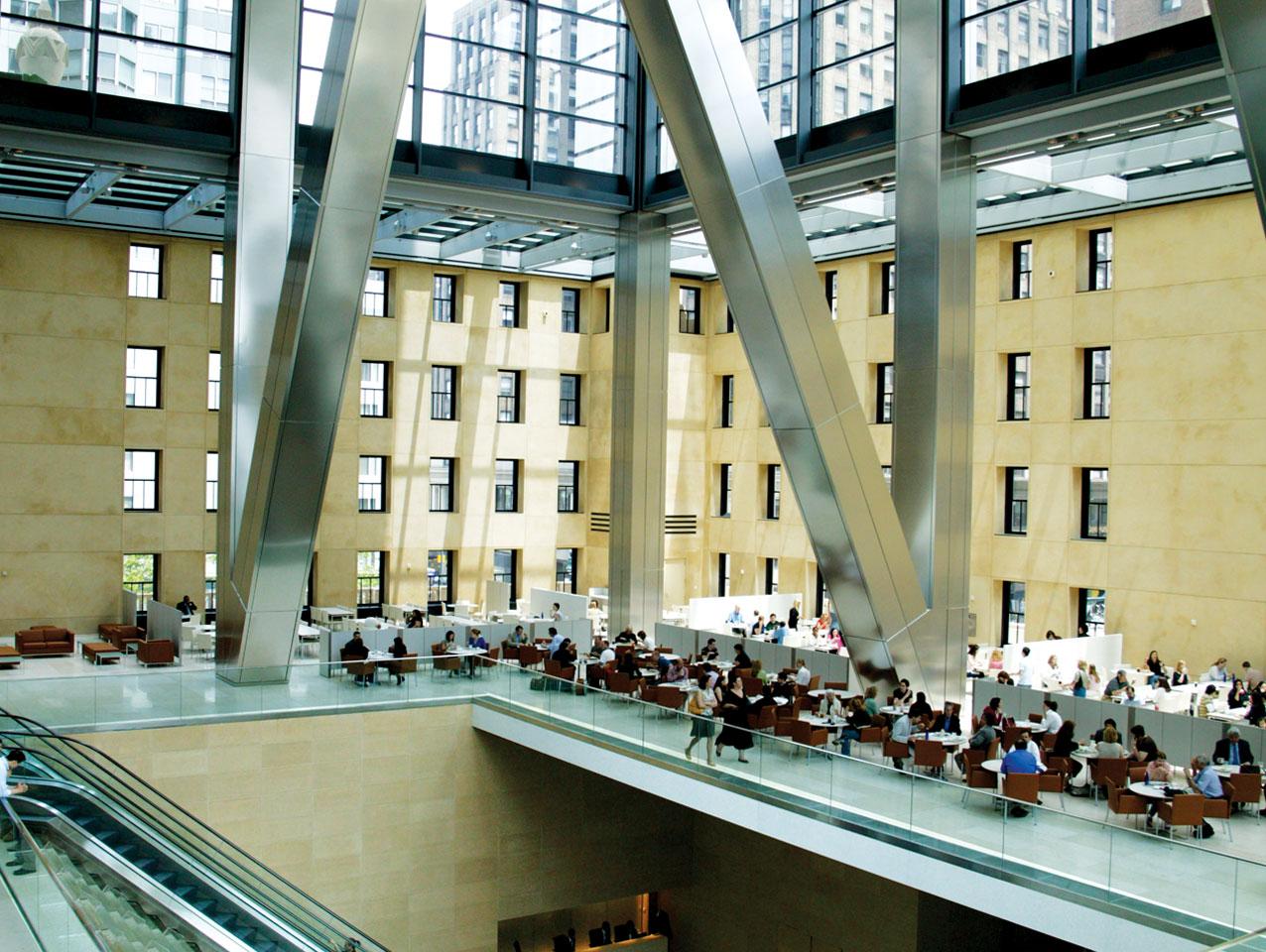
Innovative Design and Sustainability
The Hearst Tower's design is characterized by several innovative features that set it apart as a modern architectural marvel. The tower's structure is supported by a diagrid system – a diamond-shaped frame made of triangular steel elements – which not only provides structural strength but also serves as a distinctive architectural feature. This innovative approach to structural design allows for the minimization of interior columns, creating open, flexible floor spaces that maximize natural light and offer stunning panoramic views of the city.
One of the most remarkable aspects of the Hearst Tower is its unique facade. The building's glass curtain wall, made of low-iron, high-performance glass, provides exceptional transparency and visual lightness. This not only offers occupants unparalleled views of New York City but also allows for an abundance of natural daylight to penetrate the interior spaces, reducing the need for artificial lighting and minimizing energy consumption.
The Hearst Tower is an exemplary showcase of sustainable architecture. It was one of the first buildings in New York City to receive the Gold LEED (Leadership in Energy and Environmental Design) certification from the U.S. Green Building Council. The tower's sustainable features include an innovative rainwater harvesting system, which collects and stores rainwater for irrigation and cooling, reducing the demand on the city's water supply.
Moreover, the building utilizes an advanced double-skin facade that enhances energy efficiency by providing insulation and reducing heat gain, thus decreasing the overall energy consumption. Additionally, a large percentage of the construction materials used in the tower's development were recycled, and its mechanical systems are designed to optimize energy performance.
The Hearst Tower's commitment to sustainability extends beyond its architectural design. The building incorporates energy-efficient lighting, a state-of-the-art building management system, and a green roof, which further reduces the heat island effect and stormwater runoff while promoting biodiversity in an urban setting. These features combine to make the Hearst Tower an environmental-friendly landmark.
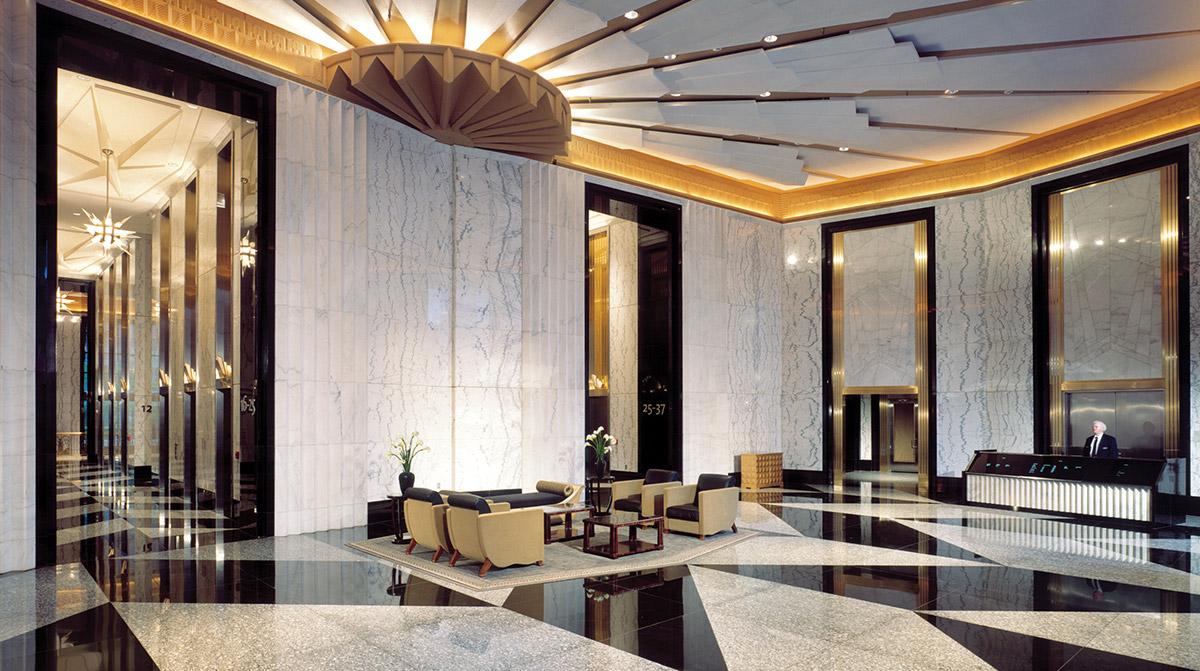
Norman Foster's Vision
Norman Foster's design philosophy, as exemplified by the Hearst Tower, is rooted in a deep commitment to creating architecture that respects and responds to its historical and environmental context. His approach focuses on combining the aesthetics of the old with the innovation of the new to achieve harmony in the built environment. The Hearst Tower serves as a testament to his ability to seamlessly merge history and modernity into an architectural masterpiece.
The Hearst Tower embodies Foster's belief in architecture that is not only visually captivating but also sustainable and responsible. His innovative use of materials, structural systems, and sustainability features in this project has left an indelible mark on the field of contemporary architecture.
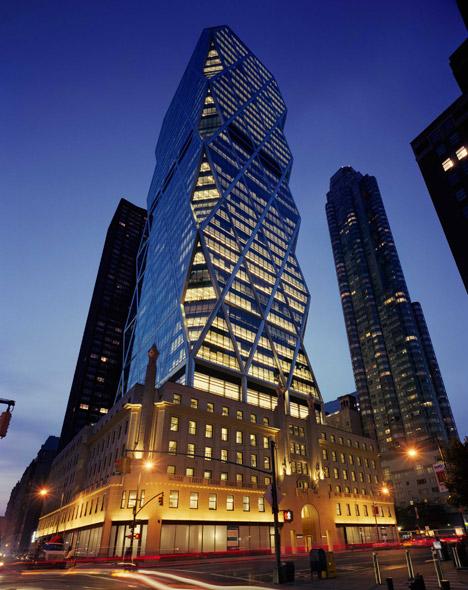
The Hearst Tower in New York City stands as a testament to the remarkable talents of Sir Norman Foster, showcasing his commitment to innovative and sustainable architecture. With its seamless fusion of a historic Art Deco base and a modern glass tower, the Hearst Tower is a visual masterpiece. The tower's innovative features, such as the diagrid structure and the double-skin facade, are a testament to Foster's forward-thinking design philosophy.
The Hearst Tower's dedication to sustainability is evident in its LEED Gold certification, rainwater harvesting system, and energy-efficient design. Norman Foster's vision for responsible architecture has been fully realized in this iconic skyscraper, which not only captures the spirit of New York City but also sets a high standard for future architectural endeavours. In the annals of architectural history, the Hearst Tower is a resounding testament to the enduring legacy of Norman Foster's groundbreaking work.
Recently Published
loves or pursues or

.jpg)






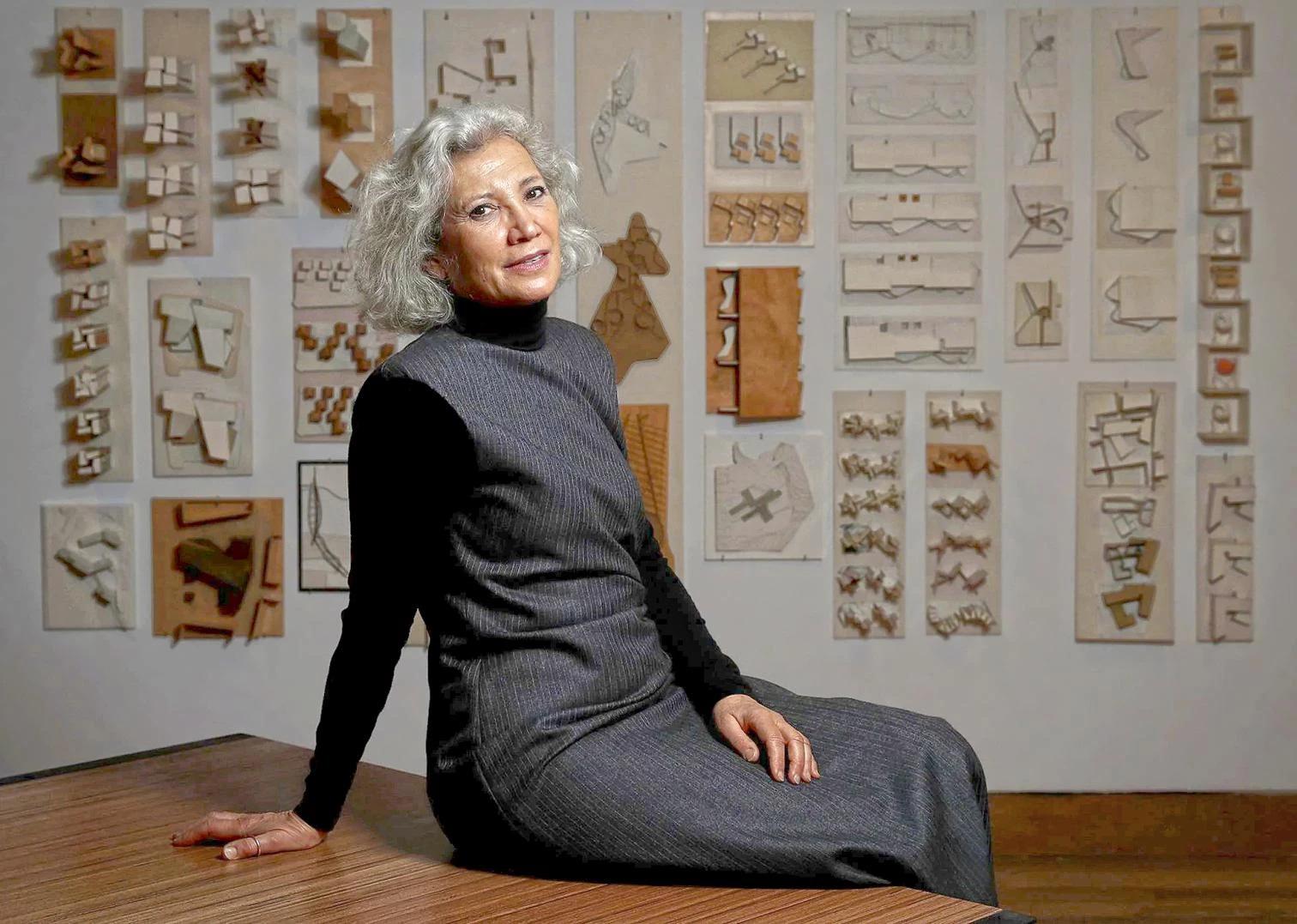
.jpg)